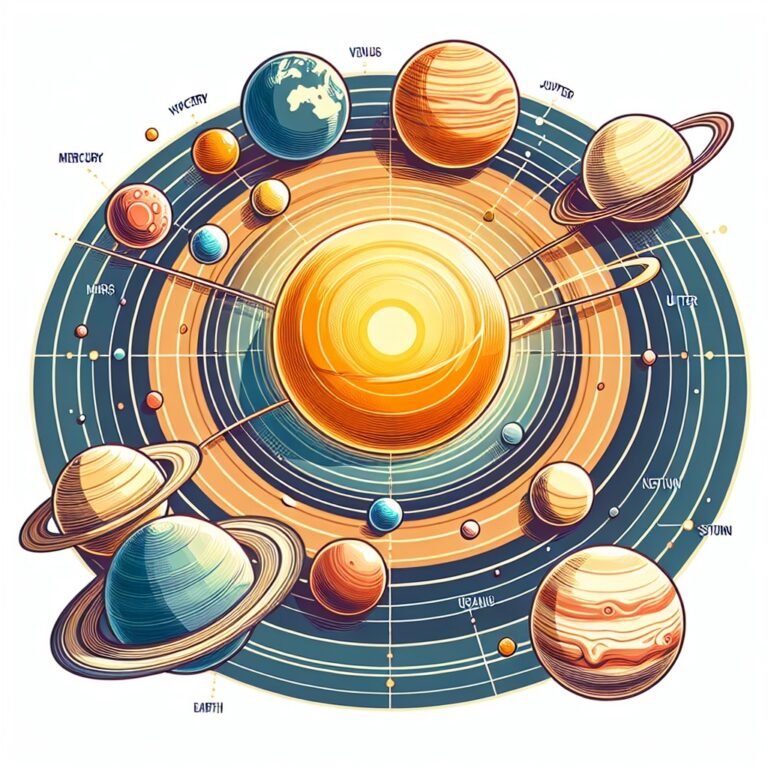The Solar System is a vast and fascinating place, filled with an array of celestial bodies that orbit our Sun. But how many planets are in the Solar System?
Answer
There are eight recognized planets in the Solar System: Mercury, Venus, Earth, Mars, Jupiter, Saturn, Uranus, and Neptune.
Simple Explanation
The Solar System has eight planets that move around the Sun. Each planet is unique, with different sizes, colors, and features, like rings or moons!
Detailed Explanation
The eight planets are divided into two groups: terrestrial planets and gas giants. The terrestrial planets—Mercury, Venus, Earth, and Mars—are rocky and have solid surfaces. In contrast, the gas giants—Jupiter, Saturn, Uranus, and Neptune—are much larger and composed mostly of gases, with no solid surface to stand on.
Why Aren’t There More Planets?
- Pluto’s Reclassification: For many years, Pluto was considered the ninth planet. However, in 2006, it was reclassified as a “dwarf planet” by the International Astronomical Union due to its size and the characteristics of its orbit.
- Criteria for Planets: To be classified as a planet, a celestial body must orbit the Sun, be round in shape, and have cleared the neighborhood around its orbit of other debris. Pluto does not meet the last criteria.
Understanding the distinction between planets and dwarf planets helps us appreciate the diversity of objects in our Solar System and their various roles within it.
Conclusion
The Solar System contains eight fascinating planets, each contributing to our cosmic neighborhood. Recognizing these planets and their unique characteristics helps us better understand our place in the universe.
FAQ
Q: Are there other types of celestial bodies besides planets?
A: Yes, besides planets, there are dwarf planets, moons, asteroids, comets, and meteoroids in the Solar System.
Q: What is a dwarf planet?
A: A dwarf planet is a celestial body that orbits the Sun and is spherical in shape but has not cleared its orbital neighborhood, like Pluto.
Q: How do scientists categorize planets?
A: Scientists categorize planets based on their size, composition, atmosphere, and distance from the Sun.
Q: Is there life on other planets?
A: As of now, no conclusive evidence of life outside Earth has been found, but scientists continue to search for signs of life on other planets.
External Sources
For more information on the planets of the Solar System, check out NASA and NASA’s Solar System Exploration.




